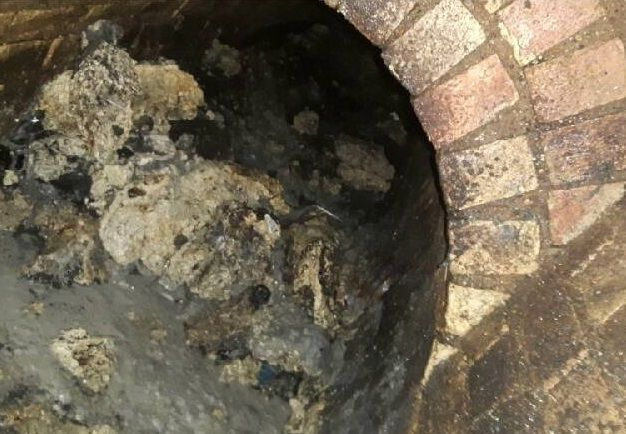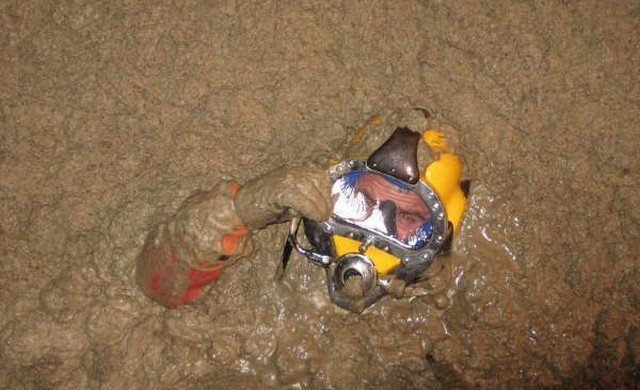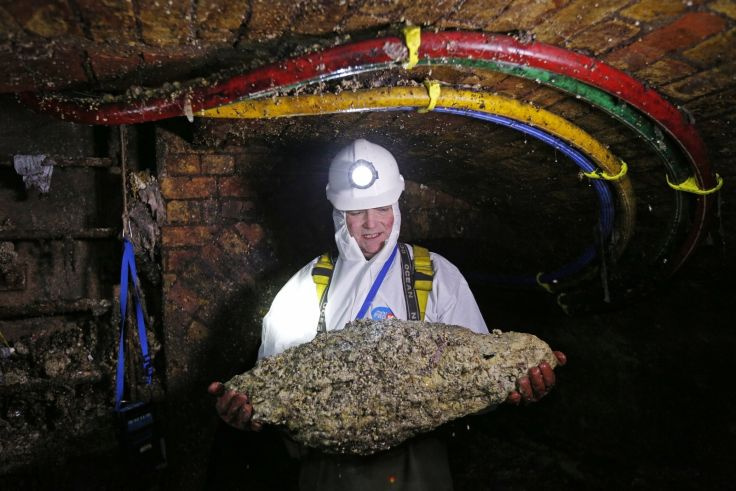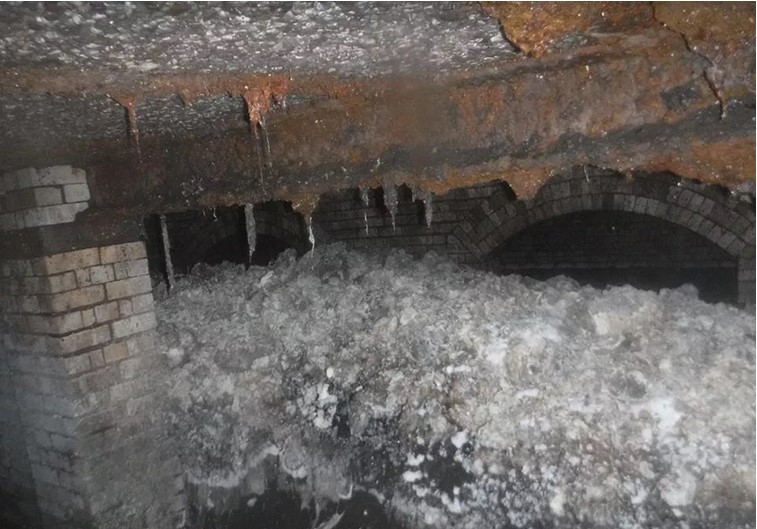One sort of gets the feeling that the decision was made on the fact that if one places a wipe in a toilet and flushes the toilet, it disappears into the sewer system…therefore they are flushable…otherwise they wouldn’t disappear.
The kleenex web site with the issues in play. Courts of law apply the law, they do not apply anything else.
https://www.kleenex.com.au/en/flushability
Our flushable wipes have undergone a series of tests to determine their flushability.
They pass all seven of the industry tests which means that they are in full compliance with INDA and EDANA flushability guidelines, the most widely used industry guidelines on flushability. There is currently no official Australian guideline on flushability. The INDA and EDANA guidelines require that wipes:
* Clear and not block in the toilet bowl and drain line
* Disintegrate when agitated
* Pass through household pumps
* Settle in sewerage systems
* Break down in aerobic conditions
* Break down in anaerobic conditions
* Flow through municipal sewer pumps without pump overload
We also endeavor to work with the wastewater community to educate Australians about what is and is not safe to flush.
Whether one agrees with those standards or not, adhering to them is the law by which the case was judged. The standards do not address fatbergs or anything else other than what is stated.
One may not agree with the outcome or the standards, but.
Kleenex say that their flushable wipes:
Condemned out their own mouth.
Is the problem that paper product technology does not exist that permits a wipe to be strong enough to do its job and then disintegrate in the sewer or that it does exist but costs too much to implement?
The disintegration test is described as follows:
The test system consists of a box oscillating at 26 rpm,containing 2 liters of tap water or wastewater (optional) in which a single individual nonwoven wipe is run for 60 minutes.Subsequently, the contents of the box are transferred to and then rinsed through a 12.5 mm perforated plate sieve resting at least 2” above a surface. The portion of the wipe retained on the sieve are recovered, dried and analyzed gravimetrically. This measurement is used to calculate the percent of the wipe’s initial dry mass passing through the sieve based on difference.At a minimum, this test is repeated with six replicate wipes.
The pass/fail criteria is:
To be acceptable:The percent of the starting dry mass passing through the 12.5mm perforated plate sieve after 60 minutes must be greater than 60% for at least 80% of the individual replicates tested.
If the wipe manufacturers can pass the INDA/EDANA guidelines they are not misrepresenting their product, which is apparently part of what the court determined, as a matter of law not a matter of sewage management, and other things contributed to the blocked sewers leading to a lack of definitive cause and effect under law.
For anyone interested the 2018 guidelines are linked to this page and this one, and available at this page.
Note these guidelines are published by an industry body not a standards organisation!
Since our governments encourage self regulation and self regulation appears to be brilliant in construction and so many other aspects of our lives this might be just another case, but even though the wipes are a problem, under law they may not be misrepresenting; the suit focused on truth in advertising. With the industry bodies self regulating and the manufacturer passing the tests, what more can be written?
I trust nobody interprets that I am defending the wipes products, just pointing out what the courts have to contend with. This is a decent synopsis of the ruling.
Interesting to note who INDA…
and EDANA…
are.
Both are texile associations which is interesting. I would have through that flushability and testing would have been through a wastewater association, which would know the ins and outs of the waster water system.
To me it is very unclear what the test device does and how this description gives any kind of standardised measure. If the box really does oscillate (move back and forth) what does 26 rpm mean? I assume it mean 26 cycles back and forth per minute not 26 revolutions per minute What shape is the box? You could alter the degree of turbulence hugely according to design.
Design A is a cubical box and each cycle it is turned first 180 degrees one way then the other, 26 times per minute.
Design B is a cylindrical box and each cycle it is turned first 5 degrees one way then the other around the axis of the cylinder, 26 times per minute.
Both are acceptable designs according to the criteria but produce widely different results in the degree of agitation.
It’s all a bit silly really.
This is the International Water Services Flushability Group recommends as a disintegration test:
Products shall meet the requirements specified in IWSFG 2018: PAS 3 Disintegration Test Method – Slosh Box.
To be acceptable:
If there is material left on the 25 mm sieve after the 1-minute rinse, the percent of the total initial dry
mass passing through the 25 mm sieve for the five (5) test specimens after 30 minutes of testing shall be greater than 95%. This result shall be supported with visual examination and pictures of solids on the sieve, as described in IWSFG 2018: PAS 3.
While this Group references some of the INDA/EDANA tests, they have also changed a few of testing methods. I suspect that the flushable wipes would not pass the slosh box test.
Choice did an agitator test a few years ago and the wipes were still intact after some reasonable agitation, whereby toilet paper had broken down into its fibres. The Choice test would be harder on the wipes that either the INDA/EDANA or IWSFG tests. I can’t see how they would pass the industry/association tests. Maybe one for Choice to test independently using the INDA/EDANA or IWSFG tests.
Also, it would be interesting to know what the wipes are made of. Are they natural fibres or synthetics (plastics). The IWSFG states ‘Plastics are defined in IWSFG 2018: PAS 2. Of concern to flushable products are plastic fibers [8], [9], [10], [11], [13], [14]. Plastic fibers should not be intentionally introduced into flushable products or be present in more than de minimis concentrations.’ I also wonder if they meet this requirement?
There are also IWSFG Settlement and Biodisintegration Tests as well.
Lets not lose sight of the fact the topic is about legal issues, not technical or scientific ones and appeals can go either way.
It may be so in your mind but to me it is also about whether the product is fit for purpose. Whether the ACCC mounted their case on the best grounds or ran it well is a matter for the courts but that is only relevant to one court case.
We have the video that started the thread and evidence from sewerage services around the world that these wipes cause problems, this says to me that a more in depth study of the real world effects of the product on sewage systems needs to be done as their industry benchmark is not good enough. The makers may get off this time or not, we don’t know, that doesn’t mean the product is fine and should be on the shelves.
Are you proposing that whether a product is fit for purpose should be a function of the courts?
In this case the purpose is cleaning. I can imagine the transcript of two silks arguing whether wipes are 'fit for purpose’. For that lets visit two sites you may or may not agree with, but.
and
In contrast there is universal agreement the current state of wipes is incompatible with any manner of sewer system. From this located on the ACCC website.
“We will argue on appeal that Kimberly-Clark’s flushable claims should have been found to be misleading because there was evidence of the risk of harm these wipes posed to the sewerage system, and that the trial judge was wrong to require evidence that these particular wipes had caused actual harm.”
That does not make the product unfit for its designated purpose or use in a court of law where evidence has to be presented. Nothing is assumed or a given. It looks like the ACCC silks were simply lazy and expected common sense to prevail while the defence produced the tests it used as well as reasonable doubt, eg evidence.
If you wish to ban wipes or (just ban flushing the wipes) by legislation you will have ‘won’ the court case brought when a dastardly friend, neighbour, or stranger flushes one. Imagine evidence collection and attribution of who is to be charged.
If you wish to rehash what is in violent agreement, please continue, but for what purpose since it is a given? The ACCC suit was about advertising claims and that is what was determined. If we take the ACCC release at face value they went in sadly ill prepared expecting a slam dunk and faced a defendant who was prepared to defend.
One always must be cognisant of the rules of the court as well as the laws both enacted and common they adjudicate because that is what matters on the day.
You jump between saying we are in violent agreement and saying I am wanting to prosecute people for what they put down their toilet. I am confused, I don’t understand your point. My comment is that the outcome of this particular court case is not all there is to the problem. If that is acceptable perhaps we should leave it.
I guess the “fit for purpose” test case should include the way “flushable” is defined. As you outlined further up there are the two “textile industry” bodies definition of “flushable” and then there is, as shown by @phb, the IWSFG (a water and sewerage service industry body) definition of disintegration test to meet the terms of what is “flushable”. The two “textile industry” bodies use 60 mins of continuous movement and then greater than 60% of the material of at least 80% of the wipes must pass through a 12.5 mm gap sieve/filter. This means no disintergration of at least 1 wipe is possible and only 3/5s of any other wipe needs to pass through. The IWSFG uses 1 min of rinsing but a 25 mm gap sieve/filter (double the sized of the two textile bodies sizing) but greater than 95% of the material of 5 test specimens must pass through within 30 mins. Not even 1 piece is allowed to remain intact from inference of the percentage that must pass through.
Which of these bodies would have more interest in making sure the infrastructure that carries this waste material would not be adversely affected, the bodies who represent the manufacturers interests (and their ability to make the largest profit possible) or the body who represents a very large international group of the ones who have to deal with the products end/after lives.
Just as a point of interest to who the IWSFG have as members in Australia the list is shown at https://www.wsaa.asn.au/about-us/our-members as that Association is a voting member of the Group.
So the definition for Australian purposes needs to be set in law rather than left to self regulation, as I either incorrectly or correctly inferred that @PhilT was hinting at in his post.
Some images of problems:

"The mass of congealed oil and wet wipes is longer than Niagara Falls and will require pickaxes to remove. Devon’s largest #fatberg has been discovered in Sidmouth. It’s a whopping 64 metres long, that’s over 6 double-decker…
Posted by South West Water on Tuesday, January 8, 2019"
“A team of divers in South Carolina went plunging to the dirtiest depths — up to 90 feet — in raw sewage to unclog pipes blocked by so-called “flushable” wipes, officials said.”

Who wants to do that sort of job? Could you be paid enough (obviously some can but…)? Why should they have to?
I suppose the other aspect is that while one flushable wipe may pass the EDANA/INDA tests, what happens when the toilet system is overloaded with flushable wipes, and the same wipes interact with other materials (such as oils and greases which act as a binding agent).
While one wipe may not pose a problem, it is multiple wipes which enter and bind to other materials in the waste water system which is the issue. I imagine that the flushable wipe companies will argue that it is not their fault that other materials (binding agents) enter the wastewater system and these, in conjunction with the wipes cause the problem. They possibly would also argue that if the other materials did not exist in the wastewater system, then thing like fatbergs would not exist…therefore they can’t be blamed for the problems which occur within the wastewater system.
While this may be true, I am sure that the scale and frequency of fatbergs and other blockages would be less without the wipes. Wipes flushing can also be avoided, while things like fats and oils can’t often to removed readily from a domestic situation as detergents used in the domestically are there to allow oils and greases to be removed from dishes, cooking equipment, clothing etc. These oils/greases don’t disappear but remain in suspension until there is an environment which allows their precipitation/congregation into fat lumps…namely when flows slow, cool and there is a suitable binding agent (which is wipes).
While one can blame fat (oils and greases), it seem apparent that the trigger for fatbergs and other blockages in many cases is a combination of both wipes(or other non-dispersable) materials and binding agents present in the wastewater stream. If removing wipes solves the problem, then something should be done in relation to the flushability classification of wipes.
Maybe the testing regime should be dispersibility, rather than whether a wipe passes through a sieve. The Choice video shows toilet paper disperses with low amount of energy, while wipes retain their form and structure with a significant amount of energy applied.
A dispersibility test would be very easy to devise as there are such tests for other products and soils.
My personal perspective:
paper = possibly flushable - eg toilet paper yes, paperback novel no
plastic = never flushable - eg wet wipe no, plastic toy no, anything else plastic no
You’d want to make sure the suit seals well, I’d think …

Exactly, and it appears the ACCC lazy silks should have avoided what might happen and focus on what actually happens, eg brought a real fatberg from an Australian sewer into court as evidence regarding the flushable claim as well as an analysis of its content and binding components.
Could be an interesting multivariate computer model of how the flotsam and jetsam in sewers each contribute to fatbergs and blockages.
The bottom line is that the ACCC, as taken from media reports, appeared clueless when the litmus test is normally not risk of harm it is demonstrable harm and the suit is about misrepresentation in advertising (as well as national origin, but that was established). It is noteworthy as stated in the ABC report, Kleenex quickly moved on to new wipes products, possibly the same or close enough, in new wrapping, but…
@grahroll is right on that I meant there is no legally recognised standard and a standard is needed. Without a standard of reference the point of law regarding advertising becomes a ‘he said she said’ argument, each valid depending on the evidence based on so-called ‘standards’ be they from industry self regulation (chuckles) or a real one that is enshrined in law.
Space Suit Quality (as in really air tight) seal I would want and a very thorough clean off & disinfection before any attempt at removal.
Should we go back to what the ancient Romans used, and seek pebbles off the beach? Ow!
Back on topic, I suspect the ACCC could not prove a single case where the defendant’s wipes had caused a sewage blockage or damage. That is very different to proving that the wipes generally cause damage/blockages.
Maybe grow Dock leaves ready for use?  I would rather that than a pebble off a beach and there are no beaches nearby to seek them off. I wonder how the sewage system would handle all that rock
I would rather that than a pebble off a beach and there are no beaches nearby to seek them off. I wonder how the sewage system would handle all that rock  I can just imagine the difficulty in the flushing and the pumping as well.
I can just imagine the difficulty in the flushing and the pumping as well.
Since you wish to pursue this, that is also different from alleging any of them is a risk to cause, which is apparently how the ACCC approached it. It is about law and courts and whether their advertising claims were* misleading, not about whether the Kleenex wipes dissolve or not or whatever.
* were because Kleenex changed the product since, or at least the packaging. Not sure about the previous generation but the current generation is apparently paper based. The current product claims are:
Able to be flushed in the toilet, they are easy and convenient to use. Flush a maximum of two wipes at a time. Wipes only suitable for use in properly maintained sewerage systems and commercial septic systems.
One has to wonder what the definition of a ‘properly maintained sewage system’ is. Lawyers can be inventive and clever with such things while missing the most basic issue that can be adjudicated. Also ‘suitable’ is not necessarily ‘safe’, but away they go…


